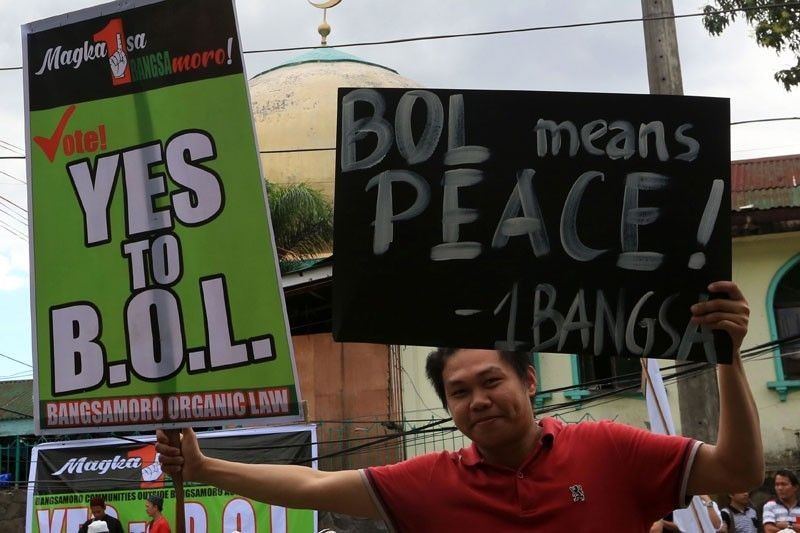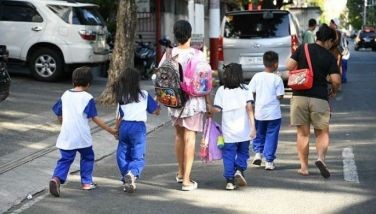Plebiscite in Mindanao: Will it be the last?

COTABATO CITY, Philippines — Mindanao had four plebiscites related to the Moro issue in about 40 years and stakeholders to the southern peace process can only hope the one held last Jan. 21 would be the last.
The plebiscite for the Bangsamoro Organic Law (BOL) was not the first since Malacañang started addressing the Moro secessionist rebellion in 1970s.
The first plebiscite for Moro autonomy was administered during the time of the late strongman Ferdinand Marcos after the signing of the Tripoli Agreement on Dec. 23, 1976.
Then Libyan leader Muammar Gaddafi brokered the Tripoli Agreement between the Philippine government and the Moro National Liberation Front (MNLF).
One of the objectives of the agreement was to group together nine southern cities and 13 provinces into a Moro-led autonomous self-governing geographical entity.
Among those who crafted the Tripoli Agreement on government’s behalf were former Maguindanao congressman Simeon Datumanong and Meranao Lininding Pangandaman, then ambassador to Saudi Arabia, who was to serve as governor of the Autonomous Region in Muslim Mindanao (ARMM) from 1993 to 1996.
That plebiscite resulted in the creation of the Regional Autonomous Governments in Regions 9 and 12.
There was another plebiscite in 1989 for the ratification of the first charter of ARMM, under Republic Act 6734, that fused together Maguindanao, Lanao del Sur, Sulu and Tawi-Tawi as ARMM’s component-provinces.
Zacaria Candao, who was counsel of MNLF founder Nur Misuari during the crafting of the Tripoli Agreement, became the first elected ARMM regional governor, serving from 1990 to 1993.
RA 6734 was amended via another plebiscite in late 2001 to become RA 9054 that resulted in the inclusion of Basilan and Marawi City into ARMM’s core territory.
The plebiscite for the ratification of the BOL under RA 11054 on Jan. 21 was the fourth since the 1970s.
The government’s diplomatic dealings with southern secessionists began with talks with the MNLF in 1972 that ended with the signing of the final truce on Sept. 2, 1996 that as consequence, catapulted Misuari to the helm of the ARMM government.
Misuari was elected ARMM governor three days after he and the administration of then president Fidel Ramos forged the final peace deal.
The peace overture between the national government and the Moro Islamic Liberation Front (MILF) that splintered from the MNLF in the early 1980s started Jan. 7, 1997, barely three months after Misuari and the Ramos administration forged the peace pact.
The MILF was founded by Ustadz Salamat Hashim, a graduate of Islamic theology at the Al-Azzhar University in Cairo, Egypt.
He and Misuari co-founded the MNLF but parted ways over revolutionary and religious ideals.
Hashim established the MILF in the early 1980s. He died of cardiovascular ailment in Butig town in Lanao del Sur in 2003.
Hashim’s chairmanship of the MILF’s central committee was taken over by Hadji Murad Ebrahim, then figurehead of the front’s Bangsamoro Islamic Armed Forces.
The government-MILF peace talks began on Jan. 7, 1997 and ended with the crafting on March 27, 2014 of the Comprehensive Agreement on Bangsamoro (CAB).
The government-MILF peace process spanned four presidents – Ramos, Joseph Estrada, Gloria Macapagal-Arroyo and Benigno Aquino III.
The government and the MILF first had in July 2008 the Memorandum of Agreement on Ancestral Domain (MOA-AD) that the Supreme Court declared unconstitutional several weeks later.
The BOL, ratified by the Jan. 21 plebiscite, was premised on two accords between the government and the MILF – the 2012 Framework Agreement on the Bangsamoro and the CAB in 2014.
Talks between the Aquino administration and the MILF reached a Bangsamoro Basic Law, or BBL, that was shelved after the Mamasapano incident in January 2015.
After the election of President Duterte in 2016, Malacañang and the MILF revised the BBL through the Bangsamoro Transition Commission, comprised of representatives from the rebel group and the national government.
Duterte shepherded the new BBL through the House of Representatives with the help of lawmakers in ARMM, among them Maguindanao’s two congressional representatives, Sandra Sema and Sajid Mangudadatu, Anak Mindanao party-list Rep. Amihilda Sangcopan and Tawi-Tawi Rep. Ruby Sahali.
The new BBL, now the BOL or RA 11054, was approved by the bicameral committee of Congress in July 2018.
By operation of law, the BOL will now replace the 29-year-old ARMM with an expanded Bangsamoro Autonomous Region in Muslim Mindanao (BARMM) led by the MILF.
- Latest
- Trending




























